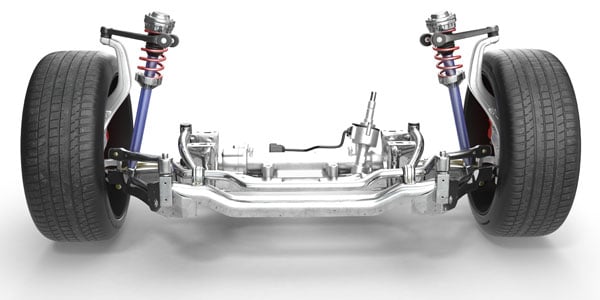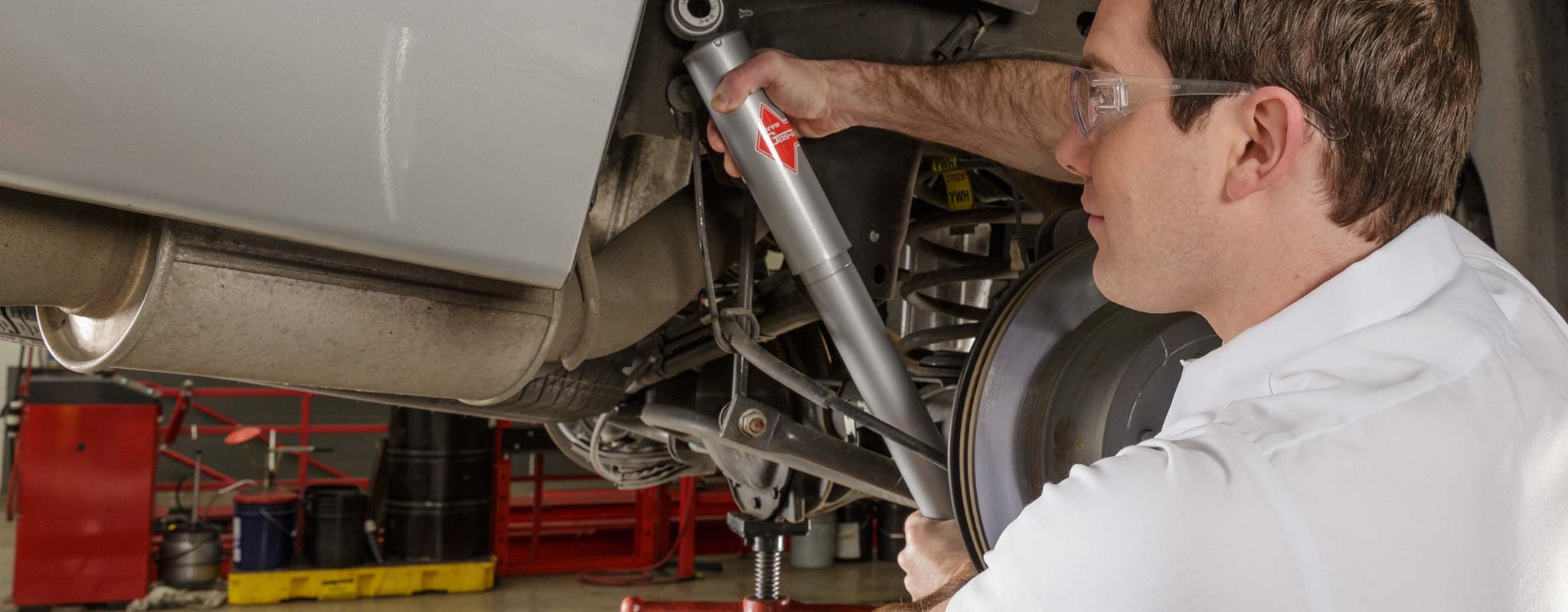Shock and Strut Service and Repair FAQ
The Basics on Shocks & Struts
What do shocks and struts do?
Shocks and struts help the tires maintain traction, by keeping the car from bouncing or the tires from losing contact with the road when you hit a bump or apply the brakes. As part of the suspension system, they help control car motion and keep the weight of your vehicle balanced even around sharp curves, so you have better stability and a more comfortable ride.
A shock or a strut operates the same but mounts differently. Each of the four tires has either a shock or strut connected to that corner’s suspension and vehicle body or frame. These hydraulic cylinders provide motion damping by restricting fluid flow through a series of internal valves. As the wheel and suspension move up and down, the shock valving slows and stabilizes these movements.
How are shocks and struts related to control behind the wheel?
Shock absorber or strut failures can be a driving safety hazard. Along with tires, shocks and struts are key factors in ride control. Ride control is how well a car handles whatever comes at you on or off road — bumps, debris, sudden stops, swerving, potholes, wind gusts, sharp turns. The ability to control your vehicle is reduced when shocks and struts aren’t properly controlling the side-to-side, front-to-back, and up-and-down shifts of the car’s weight that come with everyday driving. This is an even larger concern when the road is slippery, wet or rough.
How do I know I need new shock absorbers or struts?
Shock absorbers and struts that are working well mean more stable driving in every condition. When these components are worn, you may notice a rougher ride, longer quick-stopping distance, nose-diving when you apply the brakes, dripping fluid, tires that are cupping, excessive bounce after a bump, or swaying after a turn or stop.
Monotube, gas charged, foam cell — how do I know which shock is right for my vehicle?
With so many choices, selecting the proper shock can be confusing. Just stop by and we’ll give you our best advice, based on your vehicle and how and where you drive it.
Use our Store Locator to find the Les Schwab nearest you.
How often should I have shocks or struts checked?
Even on well-paved roads, shock absorbers or struts can move up or down 1,500 to 1,900 times every mile. Because handling performance tends to decrease gradually, a driver doesn’t always realize how much ride control has been lost. If you notice abnormal tire wear, or more vehicle movement than in the past when cornering, accelerating and stopping, pay Les Schwab a visit. It is a good idea to have your suspension checked on a regular basis, and when you get new tires.
Schedule an Appointment
What you need to know

How to Tell If Your Shocks or Struts Are Bad
Worn shocks or struts can cause unsafe driving conditions. Learn how to diagnose whether you need to replace your vehicle’s shocks or struts.

Lowering Suspension: Pros and Cons
Lowering your suspension is a popular customization that can improve driving performance and make your ride turn heads. Consider these factors first.

Why Regular Suspension Checks are Crucial for Your Vehicle’s Health
Discover the importance of regular suspension inspections for safety, performance, and cost savings. Learn how Les Schwab's free inspection services can keep your vehicle in top condition.

